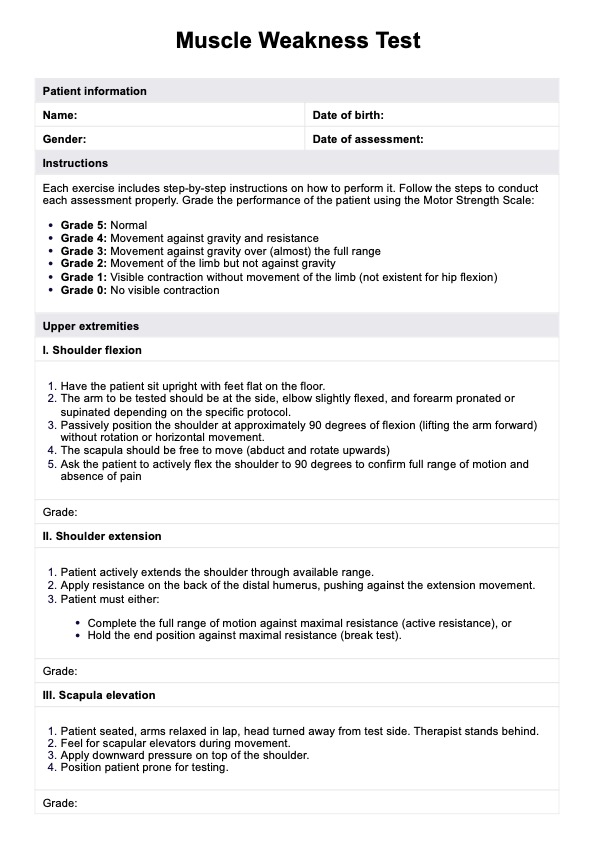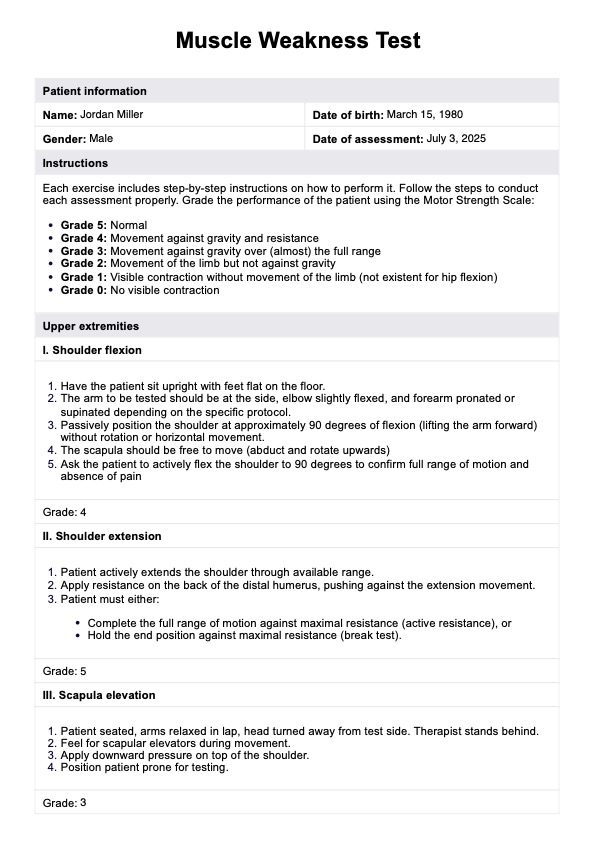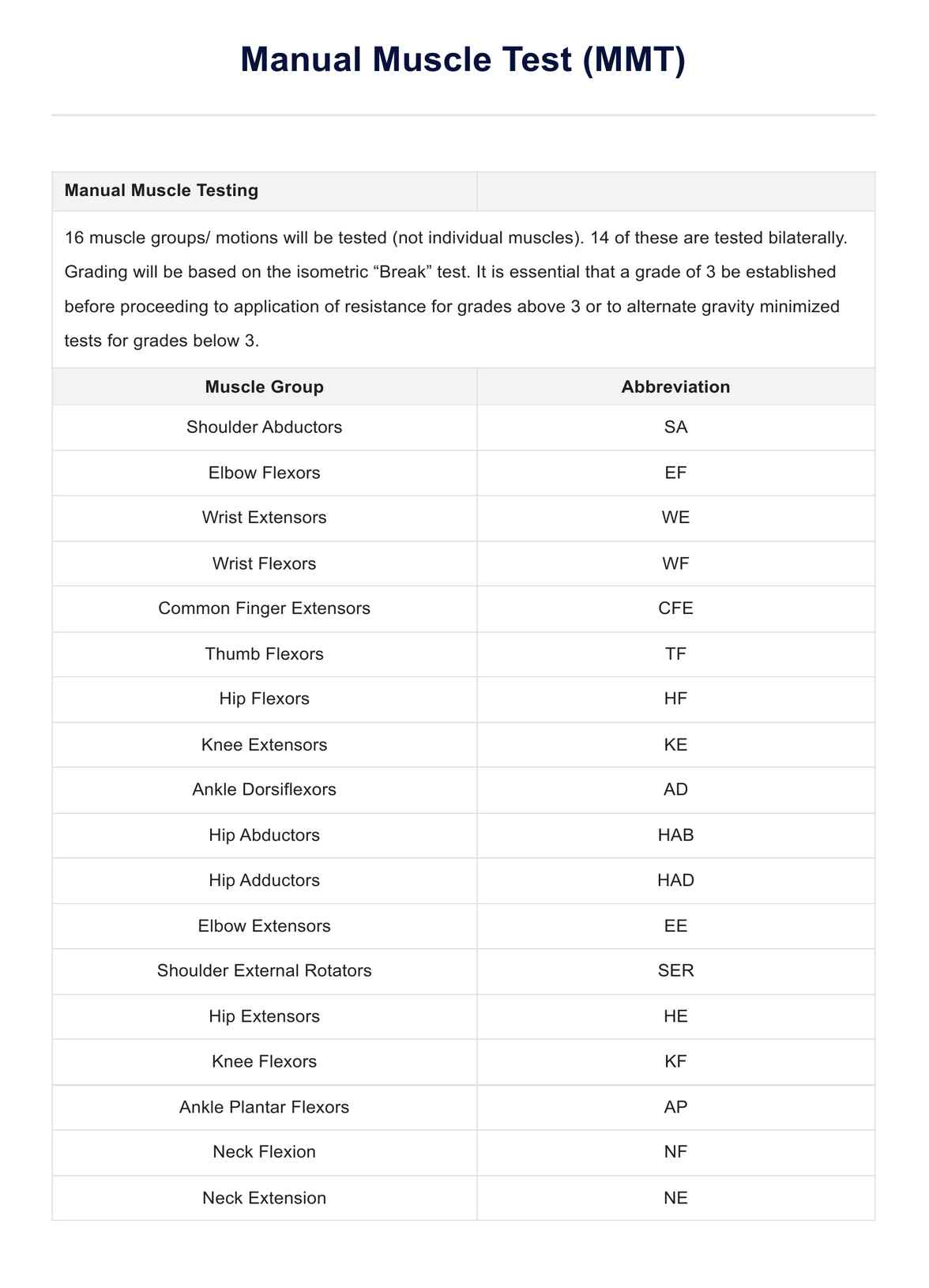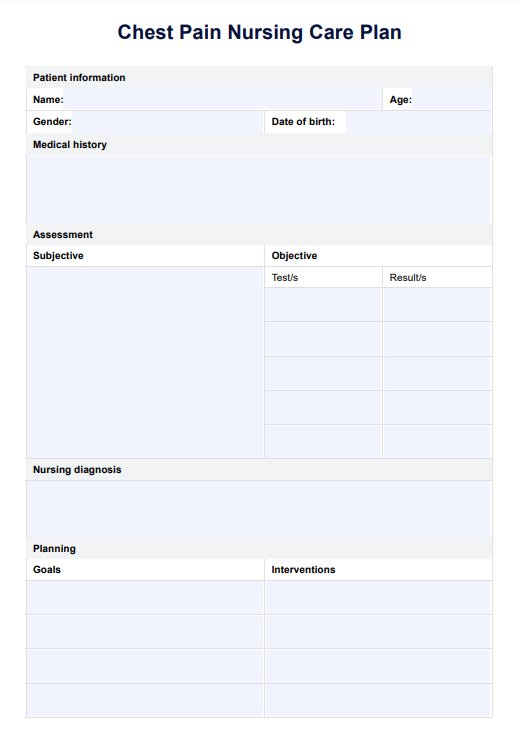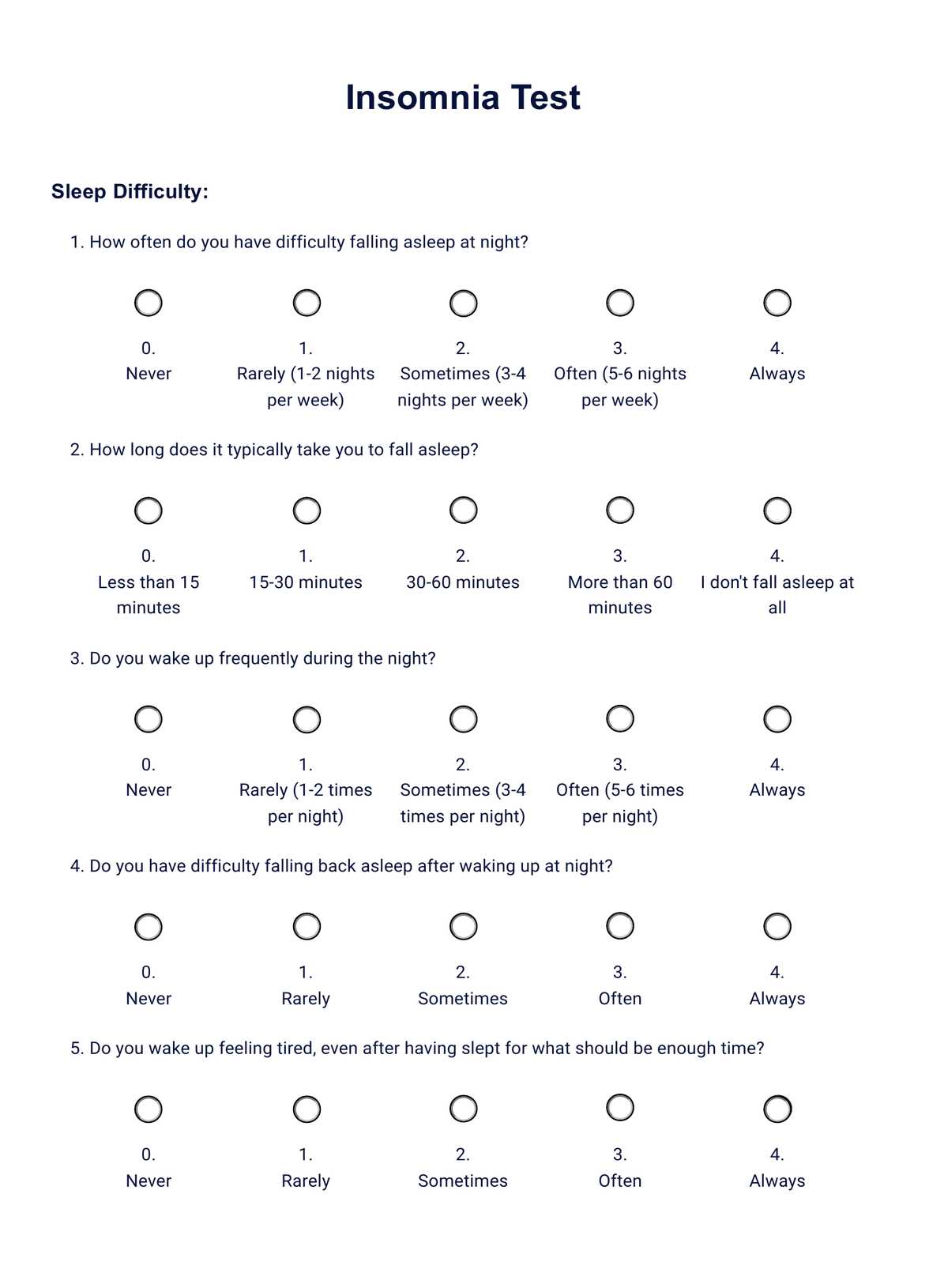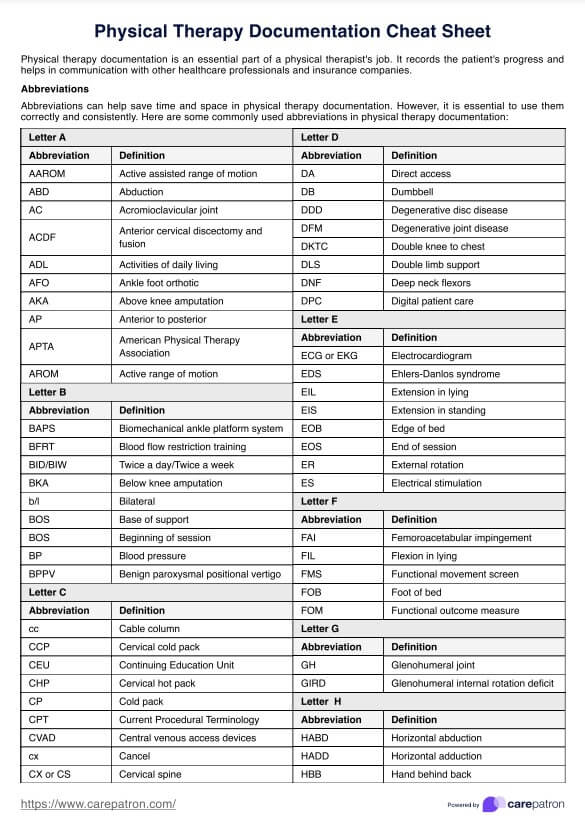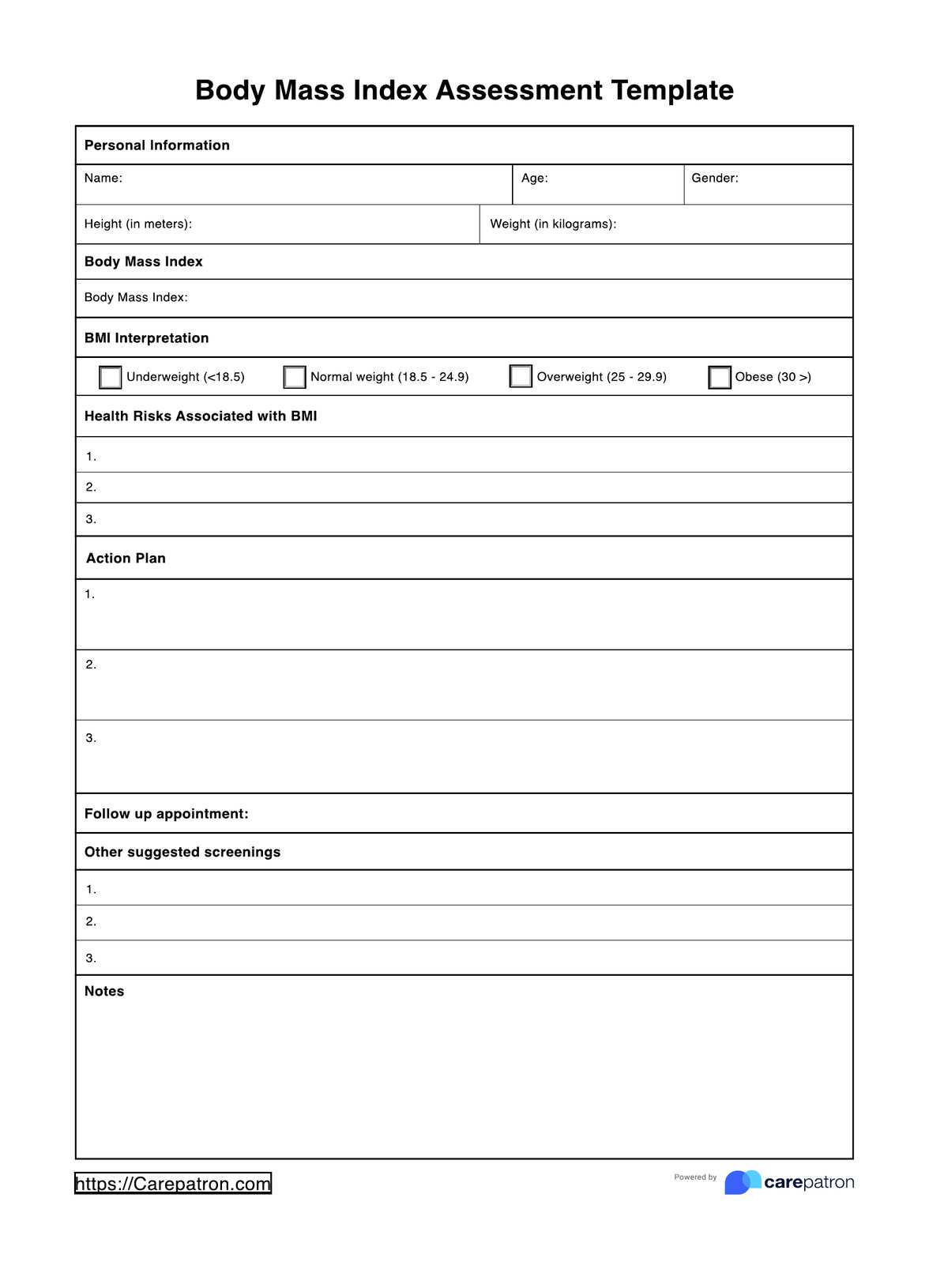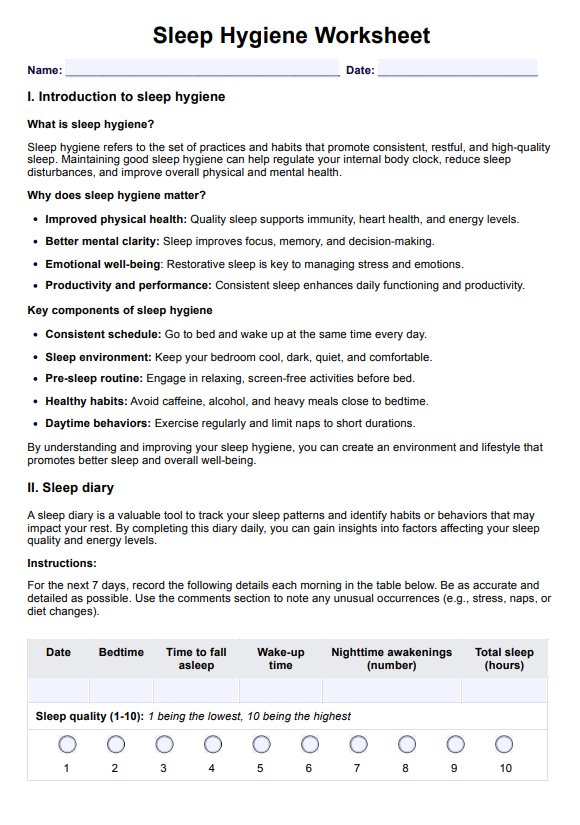Test for Muscle Weakness
Learn how to determine muscle weakness with Carepatron's free PDF download and example. This resource provides valuable information on assessing muscle strength and functionality.


What is muscle weakness?
Muscle weakness refers to a reduction in the strength of muscle contractions, leading to difficulties in performing tasksf that require physical effort. Unlike fatigue, which involves a sense of tiredness or exhaustion, muscle weakness specifically pertains to the inability of muscles to generate sufficient force.
Muscle strength grading is often used to assess the severity of muscle weakness. This grading system, typically based on a numerical muscle strength scale, helps healthcare professionals evaluate muscle function and track changes over time. It provides valuable insights into the extent of weakness and guides treatment decisions.
Muscle weakness can result from various factors, including neuromuscular problems that affect the peripheral nervous system, such as muscular dystrophy, myasthenia gravis, or neuropathy. These conditions disrupt the communication between nerves and muscles, impairing the ability of muscles to contract effectively.
Understanding muscle weakness is crucial as it can significantly impact daily activities and quality of life. Weakness in certain muscle groups may lead to difficulties in walking, lifting objects, or performing routine tasks. Moreover, muscle weakness can be a symptom of underlying health issues that require prompt medical attention.
Test for Muscle Weakness Template
Test for Muscle Weakness Example
Causes of muscle weakness
Muscle weakness can arise from various underlying factors, ranging from temporary issues to chronic conditions. Understanding the causes is essential for accurate diagnosis and effective management.
Neuromuscular disorders
Neuromuscular problems such as muscular dystrophy, myasthenia gravis, and amyotrophic lateral sclerosis (ALS) can lead to muscle weakness. These conditions affect the communication between nerves and muscles, impairing muscle function and strength.
Injury or trauma
Muscle fibers, tendons, or nerves injuries can result in muscle weakness. Traumatic events such as fractures, sprains, or compression injuries can disrupt the normal function of muscles and impede their ability to generate force.
Neurological conditions
Neurological conditions affecting the central nervous system, such as stroke, multiple sclerosis, or spinal cord injury, can cause muscle weakness. Damage to the brain or spinal cord interferes with the transmission of signals to the muscles, resulting in weakness or paralysis in affected areas.
Metabolic disorders
Metabolic disorders such as hypothyroidism, electrolyte imbalances, or metabolic myopathies can lead to muscle weakness. These conditions disrupt the biochemical processes necessary for muscle function, affecting energy production and muscle contractility.
Inflammatory conditions
Inflammatory conditions like polymyositis or dermatomyositis can cause muscle weakness due to inflammation and damage to muscle tissue. These autoimmune disorders result in the immune system attacking healthy muscle fibers, leading to weakness and fatigue.
Medications
Certain medications, such as corticosteroids or statins, can induce muscle weakness as a side effect. These drugs may interfere with muscle metabolism or contribute to muscle damage, resulting in weakness or fatigue.
Aging
Muscle weakness is also common in older adults due to age-related changes in muscle mass and strength. Sarcopenia, the gradual loss of muscle mass and function, can lead to weakness and decreased mobility.
Systemic diseases
Systemic diseases such as diabetes or kidney disease can affect muscle function and lead to weakness. These conditions may result in nerve damage, electrolyte imbalances, or metabolic disturbances, contributing to muscle weakness.
Symptoms of muscle weakness
Muscle weakness manifests in various ways and can affect individuals differently based on the underlying cause and severity of the condition. It's essential to distinguish muscle weakness from other symptoms that may cause a sensation of weakness, such as fatigue or shortness of breath.
Difficulty in performing tasks
Individuals with muscle weakness may experience difficulty performing routine tasks requiring physical effort, such as lifting objects, climbing stairs, or standing up from a seated position. Once effortless, tasks may become challenging or even impossible to complete.
Fatigue
While fatigue is different from muscle weakness, it can sometimes accompany weakness. Fatigue involves a sense of tiredness or lack of energy, whereas muscle weakness pertains explicitly to a reduction in the strength of muscle contractions. However, individuals with muscle weakness may also experience fatigue due to the increased effort required to compensate for weak muscles.
Reduced endurance
Muscle weakness can lead to decreased endurance during physical activities. Individuals may tire more quickly than usual or cannot sustain activity for extended periods. This reduced endurance can significantly impact daily activities and quality of life.
Altered gait or posture
Weakness in certain muscle groups can affect gait (walking pattern) and posture. Individuals may exhibit an uneven or unsteady gait, difficulty maintaining balance, or changes in posture, such as leaning to one side or slouching. These alterations in gait and posture may increase the risk of falls and injuries.
Muscle atrophy
Prolonged muscle weakness can lead to muscle atrophy or the loss of muscle mass. Muscle fibers may shrink in size and become visibly smaller, contributing to weakness and decreased muscle strength. Muscle atrophy is often noticeable in affected areas and may result in visible changes in appearance.
Difficulty in holding objects
Hand and arm weakness can make it challenging to grip or hold objects securely. Individuals may have difficulty with tasks such as writing, typing, or holding utensils, impacting their ability to perform daily activities independently.
Changes in muscle tone
Muscle weakness can result in changes in muscle tone, including increased or decreased muscle stiffness or rigidity. These alterations in muscle tone may affect movement and flexibility, further contributing to functional limitations.
How to Test for Muscle Weakness?
Testing for muscle weakness involves systematically evaluating muscle strength and function to assess the extent of weakness and identify potential underlying causes. Here are the steps to perform a comprehensive muscle weakness test:
1. Preparation
Before beginning the muscle weakness test, ensure the individual is comfortably positioned and relaxed. Provide clear instructions and explanations of the testing procedure to alleviate anxiety or apprehension.
2. Manual muscle testing
Manual muscle testing is a common method used to assess muscle strength systematically. This technique involves applying resistance to specific muscle groups while the individual performs a series of movements. By grading the individual's ability to overcome resistance, healthcare professionals can determine the strength of each muscle group.
3. Muscle strength grading
Utilize muscle strength grading scales to categorize the severity of muscle weakness accurately. These scales typically range from 0 to 5, with 0 indicating no muscle contraction and 5 representing normal muscle strength. Clinicians can quantify the degree of weakness and track changes over time by assigning a numerical grade to each muscle group.
4. Document findings
Document the findings of the muscle weakness test, including the muscle strength grade for each muscle group and any observed deficits or asymmetry. This documentation serves as a baseline for tracking changes in muscle strength over time and guiding treatment decisions.
How to use this template
This template is designed to guide individuals through systematically evaluating muscle weakness. Follow these steps to utilize the template effectively:
Gather necessary materials
Before proceeding with the muscle weakness evaluation, ensure that you have all the necessary materials and resources readily available. This may include a copy of the muscle weakness testing template, a pen or pencil for documentation, and any additional tools or equipment required for the assessment
Familiarize yourself with the template
Take a moment to review the muscle weakness testing template and familiarize yourself with its layout and structure. Pay attention to the sections documenting muscle strength grading, evaluating specific muscle groups, and noting any observed deficits or abnormalities.
Perform muscle strength testing
Utilize the muscle strength testing section of the template to assess the strength of key muscles and muscle groups systematically. Follow standardized procedures for manual muscle testing, applying resistance to specific movements, and grading the individual's ability to overcome resistance on a numerical scale.
Document findings and observations
Document your findings and observations systematically within the muscle weakness testing template. Record the muscle strength grade for each muscle group tested, and evaluate weakness, asymmetry, or abnormalities in the upper and lower extremities observed during the evaluation.
Consider further diagnostic testing
Based on the muscle contraction evaluation results, consider whether further diagnostic testing is warranted. This may include electromyography or EMG test, muscle nerve conduction studies, blood tests, or imaging studies to assess for underlying muscle disease, nerve damage, or other contributing factors.
Results and Interpretation
After conducting a muscle weakness test, it's important to interpret the results accurately to guide further assessment and treatment. Here are possible results and their interpretations:
Normal muscle strength
If the individual demonstrates normal muscle strength across all muscle groups tested, with muscle strength grades of 4 or 5, it suggests no significant deficits in muscle function. This result indicates that the individual's muscles can generate sufficient force for everyday activities, and further evaluation may not be necessary.
Mild muscle weakness
Muscle strength grades of 3 or lower in certain muscle groups may indicate mild muscle weakness. This result suggests that the individual has some weakness in specific muscles or muscle groups, which may impact their ability to perform certain tasks. Further evaluation may be warranted to identify the underlying cause of weakness and develop appropriate interventions.
Moderate muscle weakness
Moderate muscle weakness is characterized by muscle strength grades of 2 or lower in multiple muscle groups. This result indicates a more pronounced weakness that may significantly impair the individual's ability to perform daily activities independently. Further evaluation, including diagnostic testing and assessment of functional limitations, is essential to determine the underlying cause and formulate an effective treatment plan.
Severe muscle weakness
Severe muscle weakness is indicated by muscle strength grades of 1 or lower in several muscle groups. This result suggests a profound weakness severely limiting the individual's mobility and functional abilities. Immediate medical attention is needed to assess for potential neuromuscular problems, spinal nerve root compression, or other serious conditions contributing to weakness.
Asymmetrical weakness
Asymmetrical weakness, where one side of the body is weaker than the other, may indicate nerve compression or injury affecting specific spinal nerve roots. This result warrants further evaluation to identify the underlying cause and determine appropriate interventions to address the asymmetry and prevent further deterioration.
How to diagnose muscle weakness?
Diagnosing muscle weakness involves a systematic approach by medical professionals to identify the underlying cause and assess the severity of the weakness. Here's how healthcare providers typically diagnose muscle weakness:
Clinical history and physical examination
Medical professionals begin by taking a detailed clinical history to understand the onset, duration, and progression of the muscle weakness. They also inquire about associated symptoms, such as pain, sensory changes, or difficulty with limb movement. A comprehensive physical examination follows, focusing on evaluating the patient's strength, coordination, and muscle tone. Specific attention is paid to motor testing of proximal muscles and limb movement.
Manual muscle testing
Manual muscle testing is a commonly accepted method used to assess muscle strength systematically. Healthcare providers apply resistance to specific muscle groups while the patient performs various movements, grading the patient's ability to overcome resistance on a numerical scale. This helps in differentiating true weakness from poor endurance or other factors affecting muscle function.
Electrophysiological testing
Electrophysiological tests, such as electromyography (EMG) and nerve conduction studies (NCS), may be performed to evaluate the integrity of the nerves and muscles. EMG assesses the electrical activity of muscles, helping to identify abnormalities in muscle function or nerve supply. NCS measures the speed and strength of signals traveling along nerves, aiding in diagnosing nerve compression or dysfunction.
Differential diagnosis
Medical professionals consider a differential diagnosis to identify potential causes of muscle weakness and rule out other conditions. This may involve considering a wide range of possibilities, including neuromuscular disorders, metabolic abnormalities, inflammatory conditions, or structural lesions affecting the nervous system. Diagnostic tests, imaging studies, and laboratory investigations may be ordered based on the suspected underlying cause.
Collaborative approach
Diagnosing muscle weakness often requires a collaborative approach involving multiple healthcare professionals, such as neurologists, physiatrists, or orthopedic specialists. This interdisciplinary team works together to interpret clinical findings, review diagnostic tests, and formulate a comprehensive treatment plan tailored to the patient's needs.
To expand your resource pool and heighten client satisfaction, take a look at the electromyography template, manual muscle testing template, muscle strength scale template, and myasthenia template.
Commonly asked questions
Muscle fatigue can be tested by assessing the ability to maintain force or power output during repetitive contractions. This can be done through exercises like repeated squats or lifting weights until exhaustion.
You can test muscle weakness at home by performing simple strength tests, such as trying to lift objects of different weights or doing exercises like push-ups or leg lifts to assess strength and endurance.
Signs of muscle weakness include difficulty lifting objects, walking, climbing stairs, performing routine tasks, and noticeable changes in muscle size or tone.


